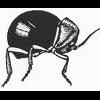- Home
- Sponsors
- Forums
- Members ˅
- Resources ˅
- Files
- FAQ ˅
- Jobs
-
Webinars ˅
- Upcoming Food Safety Fridays
- Upcoming Hot Topics from Sponsors
- Recorded Food Safety Fridays
- Recorded Food Safety Essentials
- Recorded Hot Topics from Sponsors
- Food Safety Live 2013
- Food Safety Live 2014
- Food Safety Live 2015
- Food Safety Live 2016
- Food Safety Live 2017
- Food Safety Live 2018
- Food Safety Live 2019
- Food Safety Live 2020
- Food Safety Live 2021
- Training ˅
- Links
- Store ˅
- More

Pest Control Bait Station
Started by LAB1, Mar 23 2011 03:49 PM
19 replies to this topic
#1

Posted 23 March 2011 - 03:49 PM
Is there any litature that states that a rodent baitstation has to be anchored to the ground? There is a new product that is attached to a block weight; this acts like an anchor and I need to see if there is a code for how heavy it must be or if it is a suitable replacement.
#2

Posted 23 March 2011 - 06:43 PM
That would be pretty interesting to know.
#3

Posted 23 March 2011 - 07:25 PM
Whether they need to be anchored or not is probably a local or state rule (here in the US). If your facility is audited by AIB, they do require that the bait station be "anchored in place". That does not necessarily mean it has to be anchored to the "ground".
The main reason for anchoring bait stations is to prevent the bait from being shaken loose (by small children, for example).
The main reason for anchoring bait stations is to prevent the bait from being shaken loose (by small children, for example).
#4

Posted 23 March 2011 - 09:00 PM
According BRC and IFS bait stations need to robust, of tamper resistant construction, secured in place and appropriately located.
The most common ways to secure in place is: glue or chain/wire inside the building. Glue in dry area. Wires in wet area or were you need to lift the bait station for cleaning. and placed on a sidewalk tile/anchored outside. The pupose is indeed to prevent the bait station and specially the bait to get on places you do not want it . E.g. by wind, personnel, animals/children (outside), cars, reaach trucks, cleaning company, etc.
Ofcourse a big stone on top will also do the trick
 g1646-1.jpg 62.01KB
46 downloads
g1646-1.jpg 62.01KB
46 downloads  DSCF0529.jpg 78.14KB
45 downloads
DSCF0529.jpg 78.14KB
45 downloads
The most common ways to secure in place is: glue or chain/wire inside the building. Glue in dry area. Wires in wet area or were you need to lift the bait station for cleaning. and placed on a sidewalk tile/anchored outside. The pupose is indeed to prevent the bait station and specially the bait to get on places you do not want it . E.g. by wind, personnel, animals/children (outside), cars, reaach trucks, cleaning company, etc.
Ofcourse a big stone on top will also do the trick
 g1646-1.jpg 62.01KB
46 downloads
g1646-1.jpg 62.01KB
46 downloads  DSCF0529.jpg 78.14KB
45 downloads
DSCF0529.jpg 78.14KB
45 downloads
Kind Regards,
Madam A. D-tor
Madam A. D-tor
#5

Posted 23 March 2011 - 09:06 PM
Personally I would argue that one of the main reasons for attaching to the ground is to avoid them being moved (often a problem with cleaning activities IME).
Placement can be very important, especially for non toxic baits as in the wrong place there is nothing to "attract" a rodent to the trap; normally they have to be run flush with the wall (which is where rodents would run if present). From a food safety perspective as well, there is a risk of having things floating around your food production area, potentially being trodden on and broken creating a physical hazard as well as removing the pest control protection.
For toxic baits then obviously there is the H&S risk as rodent poison is poisonous to humans.
IMO in the UK anyway, there is no reason in law why they need to be fixed but I know that AIB auditors over here have interpreted AIB as asking for fixed rather than weighted bait points and I think BRC expect them to be fixed. I suppose my question is why not fix them?
Placement can be very important, especially for non toxic baits as in the wrong place there is nothing to "attract" a rodent to the trap; normally they have to be run flush with the wall (which is where rodents would run if present). From a food safety perspective as well, there is a risk of having things floating around your food production area, potentially being trodden on and broken creating a physical hazard as well as removing the pest control protection.
For toxic baits then obviously there is the H&S risk as rodent poison is poisonous to humans.
IMO in the UK anyway, there is no reason in law why they need to be fixed but I know that AIB auditors over here have interpreted AIB as asking for fixed rather than weighted bait points and I think BRC expect them to be fixed. I suppose my question is why not fix them?
************************************************
25 years in food. And it never gets easier.
#6

Posted 29 March 2011 - 08:39 PM
There are no real answers here, I have not seen any "official" literature regarding the tethering of bait stations, It comes down to common sense and the requirements of your client specifications.
Any decent pest control operator would consult the clients, clients requirements and adhere to that.
As with all specs they if not at first obvious are there for a reason, and secondly as has been asked
Why not?? it makes sense to me, at least I know when I undertake an inspection the boxes are where I left them and I don`t waste my time on a game of hide and seek
Bunny
Any decent pest control operator would consult the clients, clients requirements and adhere to that.
As with all specs they if not at first obvious are there for a reason, and secondly as has been asked
Why not?? it makes sense to me, at least I know when I undertake an inspection the boxes are where I left them and I don`t waste my time on a game of hide and seek
Bunny
"If you think it is expensive to hire a professional to do the job, wait until you hire an amateur."
Red Adair, American Oil Well Firefighter.
Red Adair, American Oil Well Firefighter.
#7

Posted 05 April 2011 - 07:23 AM
Dear LAB1,
According to BRC food standard the bait stations must be secured in place.I got a non minor conformances as our stations were not secured into the walls.The pest controller brought new bait stations with chain links which were secured into the walls thus making it secure and cannot be moved.
Regards,
Kamwenji
According to BRC food standard the bait stations must be secured in place.I got a non minor conformances as our stations were not secured into the walls.The pest controller brought new bait stations with chain links which were secured into the walls thus making it secure and cannot be moved.
Regards,
Kamwenji
#8

Posted 06 April 2011 - 05:10 AM
I agree with the comments made by GMO. Toxic baits should not be allowed in processing areas and this is a strict requirement with Organic Standards too!!
Dr Ajay Shah.,
BSc (Hons), MSc, PhD, PGCE(FE)
Managing Director & Principal Consultant
AAS Food Technology Pty Ltd
www.aasfood.com
BSc (Hons), MSc, PhD, PGCE(FE)
Managing Director & Principal Consultant
AAS Food Technology Pty Ltd
www.aasfood.com
#9

Posted 14 April 2011 - 05:16 AM
There should be no baits inside the factory walls, as they have an attractant, and as others have pointed out, are also toxic. An obvious high risk if you have unsecured bait stations externally each side of an entrance door.
Even internal "tin cat"type traps should be secured to the wall to avoid being moved for cleaning etc.
I would think that securing bait stations is common to all standards.
Cosmo
Even internal "tin cat"type traps should be secured to the wall to avoid being moved for cleaning etc.
I would think that securing bait stations is common to all standards.
Cosmo
#10

Posted 15 April 2011 - 02:37 PM
Fixing bait or trapping boxes to the floor with glue causes another hygiene problem - they cannot be moved to clean underneath. I have lifted glued boxes with a screw driver to see a mess of dust and a scatter of crawling insects in the space around the blobs of hardened glue. Attaching them to the wall with a chain or wire is a much better option, besides when you have to replace a crushed or dirty box with a new one glued boxes are a curse.
#11

Posted 17 April 2011 - 08:53 AM
Dear all,
It is important to anchor the traps and bait stations in AIB and to be temper resistant according to BRC. Bait stations can be used as first defense line against intrusion and not recommendable inside or near food facility in any case. Glue traps can be used near food facility entrance door.
Faisal Rafique
It is important to anchor the traps and bait stations in AIB and to be temper resistant according to BRC. Bait stations can be used as first defense line against intrusion and not recommendable inside or near food facility in any case. Glue traps can be used near food facility entrance door.
Faisal Rafique
#12

Posted 18 April 2011 - 03:31 PM
Dear all,
It is important to anchor the traps and bait stations in AIB and to be temper resistant according to BRC. Bait stations can be used as first defense line against intrusion and not recommendable inside or near food facility in any case. Glue traps can be used near food facility entrance door.
Faisal Rafique
I must make the clear caveat that the use of glue traps will be very dependant upon the locality. For example, they are totally banned for rodent control use in the Netherlands, and there are considerable restructions ujpon their use in the UK.
All the major specs require bait boxes (toxic or non-toxic) to be anchored. Most require the boxes to be tamper-resistant. Preference for anchoring, IMO, is a flexible method that allows the box to be lifted for cleaning. I have found many boxes which are fixed solidly to teh ground that are holding infestable debris behind, inside or under the boxes.
I believe that the new AIB International spec now instructs that baits of any kind cannot be used inside a plant. This means that trapping methods are required.
#13

Posted 31 May 2011 - 12:47 PM
Hello,
In the past, I've found a small smear of peanut butter on the lid of the live-box an extremely effective attraction method.
To clarify, this is what I have used at home. In the fall, my home was invaded by mice. I had no idea where they were coming in. But I was pulling out a mouse per day. I ended up using the mice to help me seal up all possible entry locations. After a few days of filling holes with foam, I started to color the tales of the mice with a green sharpie so I could identify any re-entries...
Anyway, the peanut butter can also help you identify if anything has been captured as they will lick off every last drop once they are locked in with it.
Cheers,
G
In the past, I've found a small smear of peanut butter on the lid of the live-box an extremely effective attraction method.
To clarify, this is what I have used at home. In the fall, my home was invaded by mice. I had no idea where they were coming in. But I was pulling out a mouse per day. I ended up using the mice to help me seal up all possible entry locations. After a few days of filling holes with foam, I started to color the tales of the mice with a green sharpie so I could identify any re-entries...
Anyway, the peanut butter can also help you identify if anything has been captured as they will lick off every last drop once they are locked in with it.
Cheers,
G
#14

Posted 31 May 2011 - 03:20 PM
Hello,
In the past, I've found a small smear of peanut butter on the lid of the live-box an extremely effective attraction method.
To clarify, this is what I have used at home. In the fall, my home was invaded by mice. I had no idea where they were coming in. But I was pulling out a mouse per day. I ended up using the mice to help me seal up all possible entry locations. After a few days of filling holes with foam, I started to color the tales of the mice with a green sharpie so I could identify any re-entries...
Anyway, the peanut butter can also help you identify if anything has been captured as they will lick off every last drop once they are locked in with it.
Cheers,
G
I agree that this would be a useful attractant, but I think you'd run into major problems in many sites who have a no-nut policy. However, as with many pest control related issues - if it works for you, and there are no contrary regulations to deal with, then go for it!
In practice, I have found that the strong preference mice have for small dark holes will bring them into a trapping box easily enough. Where mice are trap or box-shy, attractants make little or no difference to the box effectiveness.
#15

Posted 06 June 2011 - 04:24 PM
Since you are discussing bait/catch stations, I have this recurrent problem witn catch stations located inside the production area where they get constantly smashed either by forklift traffic or the pallets. The pest control company place the stattions where they shall be, based on separatin from each other, but do not pay attention to the operational risk that those traps are exposed when placed there, and of course thay are happy re-placing those traps every service visit.
I'm looking for some king of heavy duty guard to put in front on next to this station so they are protected from forklifts. Does anybody knows of someting that is used here in the united stated and where to buy it? I'm looking for something like in this picture, but this particular guard is too long (9 inc Highr x 39 Ind Long) I'll appreciate any help.

I'm looking for some king of heavy duty guard to put in front on next to this station so they are protected from forklifts. Does anybody knows of someting that is used here in the united stated and where to buy it? I'm looking for something like in this picture, but this particular guard is too long (9 inc Highr x 39 Ind Long) I'll appreciate any help.

#16

Posted 06 June 2011 - 10:04 PM
If you have a competent welder on staff, you can make your own for cheap using steel plate. I will take pictures and post when I get into work in the morning.
Marshall
Marshall
Since you are discussing bait/catch stations, I have this recurrent problem witn catch stations located inside the production area where they get constantly smashed either by forklift traffic or the pallets. The pest control company place the stattions where they shall be, based on separatin from each other, but do not pay attention to the operational risk that those traps are exposed when placed there, and of course thay are happy re-placing those traps every service visit.
I'm looking for some king of heavy duty guard to put in front on next to this station so they are protected from forklifts. Does anybody knows of someting that is used here in the united stated and where to buy it? I'm looking for something like in this picture, but this particular guard is too long (9 inc Highr x 39 Ind Long) I'll appreciate any help.
#17

Posted 07 June 2011 - 10:17 AM
Picture of the coverings we use in the shipping area. 1/4 inch steel plate welded together and then anchored to the floor.
Marshall
Marshall
Attached Files
|
Thanked by 1 Member:
|
|
#18

Posted 07 June 2011 - 10:12 PM
Picture of the coverings we use in the shipping area. 1/4 inch steel plate welded together and then anchored to the floor.
Marshall
Thank you. That is exacly what I need, I saw some similar yesterday, but the ones in the market do not look as tought as the ones you made. I'll see if I can get somebody to do it for us.
Thanks again.
#19

Posted 08 June 2011 - 02:43 AM
Quite welcome. Very simple to construct and as long as the traps stay under the guard, the traps will be safe.
Marshall
Marshall
Thank you. That is exacly what I need, I saw some similar yesterday, but the ones in the market do not look as tought as the ones you made. I'll see if I can get somebody to do it for us.
Thanks again.
#20

Posted 28 June 2011 - 11:22 AM
Fixing bait or trapping boxes to the floor with glue causes another hygiene problem - they cannot be moved to clean underneath. I have lifted glued boxes with a screw driver to see a mess of dust and a scatter of crawling insects in the space around the blobs of hardened glue. Attaching them to the wall with a chain or wire is a much better option, besides when you have to replace a crushed or dirty box with a new one glued boxes are a curse.
Never heard of anyone gluing boxes to the floor - is that your idea or the pest contractors?
Practical Internal Auditor Training for Food Operations Now available via the recording of the Webinar on Friday 5th December 2025.
Suitable for Internal Auditors as per the requirements of GFSI benchmarked standards including BRCGS and SQF.
IFSQN Implementation Packages, helping sites achieve food safety certification since 2009:
Practical HACCP Training for Food Safety Teams available via the recording until the next live webinar.
Suitable for food safety (HACCP) team members as per the requirements of GFSI benchmarked standards including BRCGS and SQF.
1 user(s) are reading this topic
0 members, 1 guests, 0 anonymous users

























